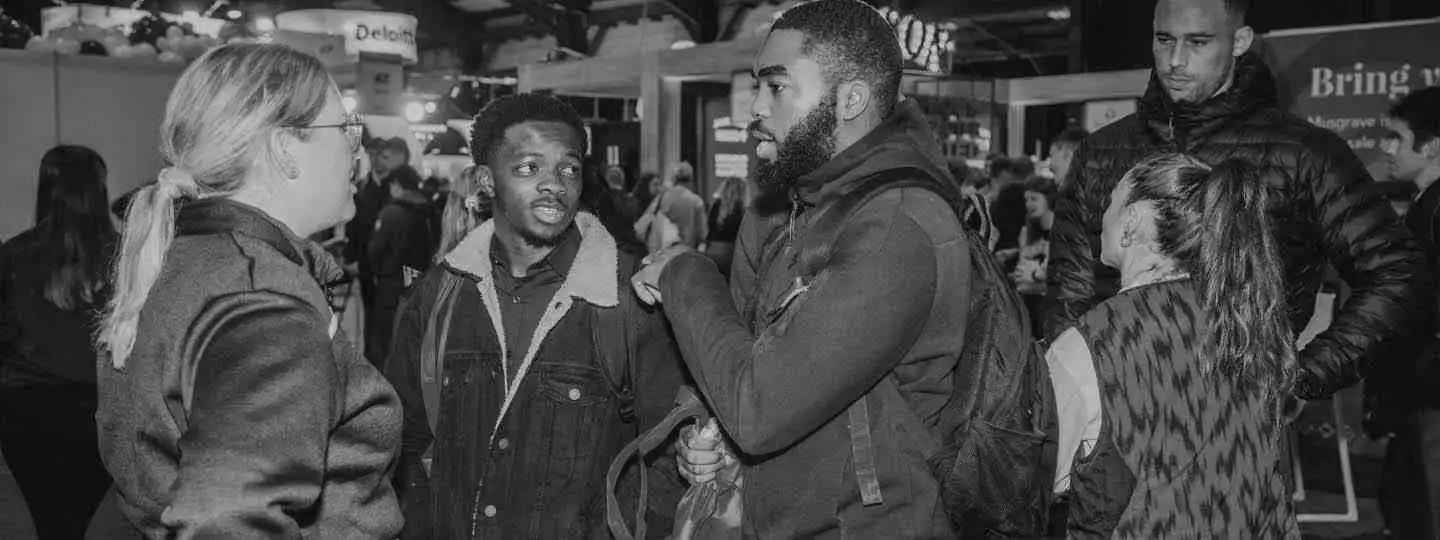Visual merchandiser: job description
1 Aug 2024, 16:14
Visual merchandisers plan how retail products are displayed, creating engaging environments for customers and increasing sales for the retailer.

What does a visual merchandiser do? Graduate salaries | Typical employers | Qualifications and training | Key skills
Visual merchandisers (also known as product merchandisers) work in stores or at retailers’ head offices. They’re responsible for designing and implementing store layouts and product displays. These affect sales, so visual merchandising is an essential role for retail organisations.
You may hear people in this job referred to as ‘window dressers’ but there’s a lot more involved. As well as being a creative role, it also involves business-related tasks.
These can include:
- researching products, competitors and branding
- keeping up to date with brand and design trends and research into customer behaviour
- data analysis – for example, looking at the impact of different layouts on sales
- developing and delivering presentations
- building good relationships with suppliers
- maintaining health and safety standards
- creating plans using specialist software
- developing reports and product documentation
- organising events and promotions
- training and advising colleagues
- reporting on results to managers.
Alongside this, you’ll create in-store displays or supervise colleagues doing this, and advise on larger-scale projects such as department or whole-store redesigns. Here, you could find yourself making recommendations about wider aspects of designing a space, such lighting or health and safety.
You may travel to other stores to implement your designs or to carry out research. You’ll probably need to work some evenings or weekends to be able to update layouts and product displays when customers are not present.
You’re likely to start as an assistant or trainee. As you progress, you could move into a management role, which is likely to involve leading a team and taking responsibility for training and recruitment. Alternatively, you could choose to specialise in a particular type of product, or set up your own consultancy business. Your visual and spatial skills, plus your experience using specialist design software, could also help you take a sidestep into a related career such as interior design. Check out other creative careers for graduates.
Visual merchandising is different from merchandising, although you’ll find both of these roles in the retail section. Merchandising is about ensuring products are available and correctly priced. Discover how to get a job in merchandising, by a Next merchandiser.
How much money do visual merchandisers make?
According to job site Glassdoor, you’re likely to earn around £18,000 when you start out in visual merchandising. If your role is part of a trainee or graduate scheme you can earn more: from £28,000 with some retailers (according to individual vacancies we've looked at).
It’s common for visual merchandisers to get a discount on products sold by the organisation they work for. There are also likely to be rules about gifts and ‘freebies’ from suppliers.
Who employs visual merchandisers?
Large retailers employ visual merchandisers for individual stores or a group of them. A few high-street retailers offer trainee merchandising roles while others include it as an option within their graduate scheme. Smaller and independent shops tend to include visual merchandising as part of store management responsibilities.
Once you’ve gained experience, you can work as a self-employed visual merchandiser or design consultant.
Jobs are advertised on stores’ websites and via their social media. Find graduate jobs and schemes with large retailers on targetjobs. Smaller brands/stores may use recruitment agencies.
Qualifications and training required to become a visual merchandiser
You don’t need a degree to become a visual merchandiser. You could take a course run by the British Professional Merchandise Association or the Fashion Retail Academy, but these aren’t essential to get started. Similarly, you could consider an apprenticeship and learn on the job. However, many people work their way up from in-store and entry-level head office roles.
If you’re working in retail while studying, look for opportunities to shadow visual merchandisers or ask if colleagues will talk to you about the role. If your store is small, you could take responsibility for product displays. You can also look for a longer period of work experience through a placement in retail if you’re studying fashion, business management or a similar subject. Alongside these ideas, explore online courses on marketing, design and business, and test drive design software with free trials.
Clue yourself up on retail work experience: what's available and how it could help you.
Once you have a found a role, you’re likely to receive some health and safety training on the job because of the physical work involved. For example, you could be trained on lifting heavy items or using ladders safely.
Key skills required
Alongside visual creativity, you’ll also need:
- excellent communication skills
- experience using design software
- commercial awareness
- the ability to learn quickly
- collaboration and teamworking skills
- the ability to give and receive feedback
- negotiation skills
- presentation skills.
If you’re studying a creative subject, consider creating a portfolio to showcase your ideas.
targetjobs Editorial advice
This describes editorially independent and impartial content, which has been written and edited by the targetjobs content team. Any external contributors featuring in the article are in line with our non-advertorial policy, by which we mean that we do not promote one organisation over another.



